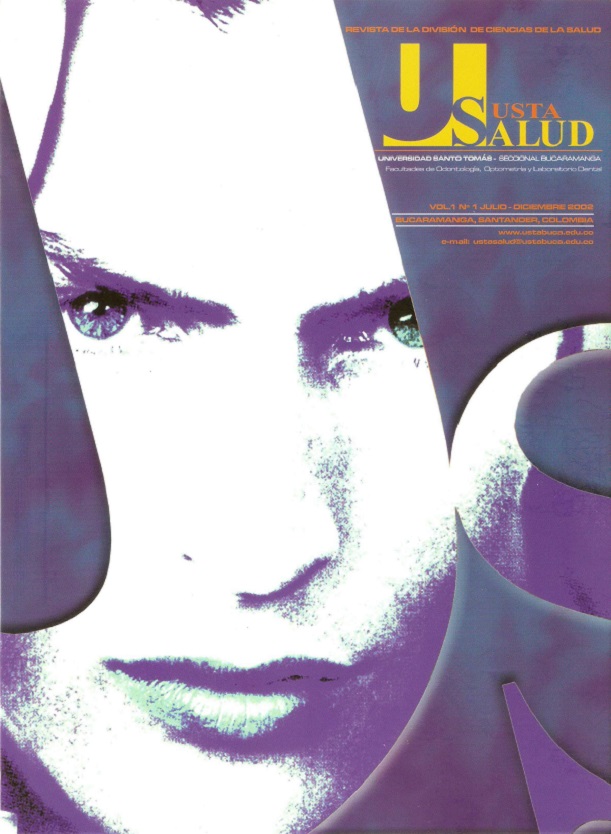FACTORES QUE CONDICIONAN LA ENFERMEDAD PERIODONTAL EN INDIVIDUOS CON SÍNDROME DE DOWN
Resumen
Los individuos con síndrome de Down presentan alteraciones sistémicas y clínicas que ayudan al desarrollo de la enfermedad periodontal, en especial gingivitis ulceronecrotizante aguda y periodontitis rápida progresiva. Las causas del desarrollo son alteraciones inmunológicas, especialmente por los linfocitos T; disfunción tiroidea, leucemia linfocítica aguda, alteraciones genéticas con características faciales, orales y anomalías en el desarrollo; alteraciones microbiológicas (presencia de A. actinomycetemcomitans y P. intermedia) asociadas a una mala higiene oral muchas veces relacionada con el retardo mental. Al revisar los factores que condicionan la enfermedad periodontal en individuos con síndrome de Down, se observa que hay una predisposición a la enfermedad periodontal, en la cual los factores genéticos e inmunológicos son los principales precursores de esta enfermedad de rápida progresión, los factores microbiológicos y la pobre higiene oral actúan como factores contribuyentes del desarrollo y progresión, como factores exógenos.
[Delgado E, Díaz NE, Chacón CM, Delgado R, Flórez LT. Factores que condicionan la enfermedad periodontal en individuos con síndrome de Down. Ustasalud 2002; 1: 43 - 48]
Referencias
2. Escobar J, Restrepo l. Descripción y análisis de las condiciones de higiene oral y gingival en jóvenes de 7 a 17 años con síndrome de Down y retardo mental moderado institucionalizados. CES Odontología 1996; 9: 133 - 135.
3. Gutiérrez J, Rodríguez J, Sandoval Y, Vargas M, Larourie G, Rozo M. Comparación de la técnica de modelamiento con o sin refuerzo sonoro en el aprendizaje de técnicas de higiene oral en niños con síndrome Down de 2 a 4 años. Escuela colombiana de medicina 1995; 2: 83 - 89.
4. Lindhe. Periodoncia: Placa microbiana y tártaro dental. Capítulo 3. Brown R; Cunningham WM 1992.
5. López R, López P. Manifestaciones clínicas del síndrome Down. Mundo Médico; Oral día 1997; 17: 6 - 9.
6. Cohen MM. Oral aspects of mongolism. Part l. Periodontal disease in mongolism. Oral Surg Oral Med Oral Pathol 1961; 14: 97 - 107.
7. Kisling E; Krebs G. Periodontal conditions in adult patients with mongolism (Down's syndrome). Acta Odont Scand 1963; 21: 391 - 401.
8. Saxen L, Aula S. Periodontal bone loss in patients with Down's syndrome: a follow-up study. J Periodontol 1982; 53: 158 - 162.
9. Cárdenas D. Manual de odontopediatría. 2da. Ed. Medellín: CIB, 2000.
10. Burgett F. Patología bucal. 2da. Ed. México: McGraw-Hill Interamericana; 1995.
11. Fort P. Abnormalities of thyroid function infants with Down syndrome. J Pediatric 1984; 104: 545.
12. Westphal O. Normal growth and growth disorders in children. Acta Odontol Scand 1995; 53: 174 - 178.
13. Chachua I, Gómez O. Asociación del antígeno HLA clase II en pacientes con síndrome Down con y sin enfermedad periodontal. Revista odontológica de la Universidad del Bosque 1998; 71 - 77.
14. Sohoel DC. Expresion of HLA class II antigens in marginal periodontitis of patients with Down's syndrome. Eur J Oral Sci 1995; 103: 4 - 8.
15. Barr-agholme M, Dahlüf G, Iinder I, Modeer E. Actinobacillus actinomycetemcomitans, Capnocytophaga and Porphyromonas gingivalis in subgingival plaque of adolescents with Down's syndrome. Oral Microbiology and Immunology 1992: 7: 244 - 248.
16. Reuland-bosma M. Experimental gingivitis around deciduous teeth children with Down's síndrome. J Clin Periodontol 1986; 13: 294 - 300.
17. Yavuzyilmaz E. Neutrophil chemotaxis and periodontal status in Down's syndrome patients. J Nihon Univ Sch Dent 1993; 91 - 95.
18. Miller M, Ship l. Periodontal disease in the institutionalized mongoloid. J Oral Med 1987; 32: 9 - 12.
19. Delarom H. Herpesvirus and periodontopathic bacteria in trisomy 21 periodontitis. J Periodontol 2000; 71: 376 - 384.
20. Zainal Y, Stephan R, Porter J. Levels of serum IG G against Porphyromonas gingivales in patients with rapidly progressive periodontitis; rheumatoid arthritis and adult periodontitis. J Nihon Univ Sch Dent; 1995; 37: 197 - 200.
21. Barr-agholme M, Modere T, Luthumon J. Immunohistological study of neuronal markers in inflamed gingiva obtained from children with Down's syndrome. Journal Clin Periodontol 1991; 18: 624 - 633.
22. Robbins SL. Patología estructural y funcional. Sta. Ed. McGraw-Hill Interamericana Editores; 1997.
23. Rojas W, Cano LE. Inmunología: inmunidad humoral; estructura general de las inmunoglobulinas. Capítulo 10. 11 ª ed.; 1999; p. 135 - 149.
24. Baelum V, Fejerskov O, Dabelsteen E. Langerhans cells in oral epithelium of chronically inflamed human gingivae. J Periodont Res 1989; 24: 127 - 136.
25. Sznadjder N. Clinical periodontal findings in trisomy 21 (mongolism). J Period Res 1968; 3: 1 - 5.
26. Reuland-bosma W; Dijk V. Periodontal disease in Down's syndrome. A review. J Clin Periodontol 1986: 13: 64 - 73.
27. Serger R. On the influence of age on immunity in Down's syndrome. Europea J of Pediatrics 1977; 124: 77 - 87.
28. Barkin RM. Phagocytic function in Down's syndrome. J of Mental Deficiency Res 1980; 24: 243 - 249.
29. Kretschmer R. Leukocyte function in Down's syndrome quantitative NBT reduction and bacterial capacity. Clin Inmunol and Pathol 1974; 2: 449 - 455.
30. Kashima l. Bone trabecular pattern analysis in Down's syndrome with the use of computed tomography with laser scan system. Quantitative analysis with the power spectrum method. Oral Surgery 1988; 65: 3.
31. Curtes TW. Periodontal disease and oral hygiene in trisomy 21. Archives of Oral Biol 1971; 16: 1345 - 1355.
32. Ohnson M, Young C. Cavidad oral en síndrome de Down. J Enf Ment 1979; 8: 15 - 16.
33. Barnett ML. The prevalence of mitral valve prolapse in patients with Down's syndrome: implications for dental management. Oral Surg Oral Med Oral Path 1988; 66: 445 - 447.















